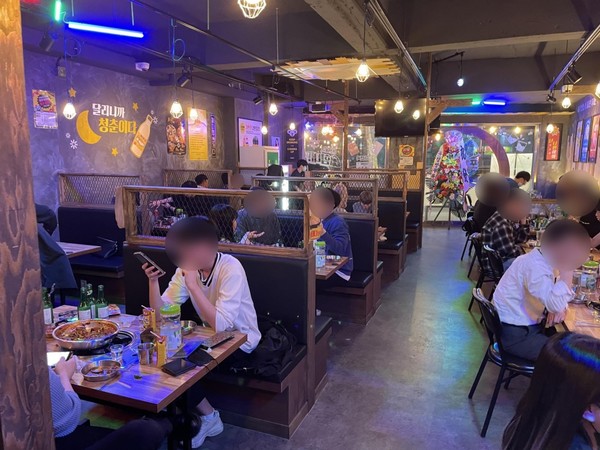If I surveyed KAIST’s international students and asked what their perception of a university party was before arriving in Korea, it would be a safe bet to assume most students’ responses would be vastly different from what they have since experienced. The most common portrayal of university parties in modern media — whether it be social media or streaming entertainment — is a largely westernized image dominated by dormitory and house parties, with a sprinkling of bars and nightclubs. The reality in Korea, and particularly at KAIST, is vastly different, but not in the ways you may expect.
An objective fact within Korea is that what the West views as “house parties” are effectively non-existent. Why is this the case? A simple way to look at it is the lack of standalone “houses”. Korea’s high population density means apartment complexes are by and large the only accommodation available for most of the population. Any significant gathering of people would almost inevitably bring in noise complaints from neighbouring residences, and even notifying neighbours beforehand most likely wouldn’t be taken well in a culture that traditionally values peace and quiet very highly.
So, what is the deal with dormitories? Korean culture is deeply rooted in traditional Confucianism, despite the very modern appearance of Korean society. One of the consequences of this is that the two sexes are separated in education, often as early as middle school. As a result, university dormitories are almost always single-sex. In fact, at KAIST, every dormitory building is single-sex — largely to the disdain of the majority of the student body.
Some may ask how this affects party culture; it’s entirely possible to host parties in single-sex dormitories. Aside from the (some would say unnecessarily) strict rules around dormitory room use, the social tendency of most students is what dictates this. Simply put, many university students use social party settings to socialise with those of the opposite gender. The party and alcohol serve as a catalyst, ever more needed at KAIST, where students are more reserved than in many other universities. Take that objective away, and there is no longer a drive to have larger-scale dormitory parties.
So what is the alternative? Koreans inherently turn to external establishments. Drinking culture is ingrained in Koreans’ socialising behaviours, and this includes finding partners. Hunting Pochas, roughly translated as hunting bars, fill this gap in the market. These are effectively singles bars, where patrons attend with the intention of picking up a date, often to take to another bar or club afterwards. Many are not necessarily advertised as so on the outside, but many of these establishments encourage verbal interaction with other patrons, or even allow messaging other tables through tablets that you would normally use to order food and drinks.
However, what about those genuinely looking to party and socialise without the hidden motives? That is where suljibs (Korean style pubs) come in. These Korean pubs differ from western-style pubs in that there are often sectioned-off sitting areas for large groups, and the menu items are tailored around the alcohol options available. Western pubs are more focused towards food, recreation, and socialising, whilst Korean establishments are fully geared towards heavy drinking. This is often where many Korean university students have their first alcoholic drinks, while sitting around a table with batch-mates or fellow club recruits in a “party”-like setting.

Besides the location, the average age of exposure to these social environments is a key difference between Korea and Western countries. It is rather common for high school students in Western countries to attend house parties, with some even buying and consuming alcohol through older friends or with fake IDs. As irresponsible as this is, it results in many students learning their own alcohol limits and party etiquette. In fact, most university students in Western countries will know how to take care of intoxicated friends by this point. This is a key difference for Korean university students.
Due to the extremely competitive nature of Korean secondary education, it is incredibly rare to hear of any high school student doing anything other than preparing for university. This means that many overindulge in drinking alcohol and smoking cigarettes the instant they are free to make their own decisions at university. It is good that secondary school students in Korea are not exposed to alcohol and other party substances, but the overindulgence and consequent addictions it may cause once they come of age are a serious issue.
Party culture in Korea and the West may appear vastly different, but the intentions of those who attend parties are the same — they are simply fulfilled in different ways. Korea has separate styles of bars and drinking establishments with different purposes. On the other hand, all these functions are fulfilled at one large house party in Western countries. As international students, party experiences at home may be vastly different to our current experiences in Korea, but that doesn’t mean we can’t enjoy ourselves. Just be considerate of the local culture, be open-minded, and stay safe on your nights out.

